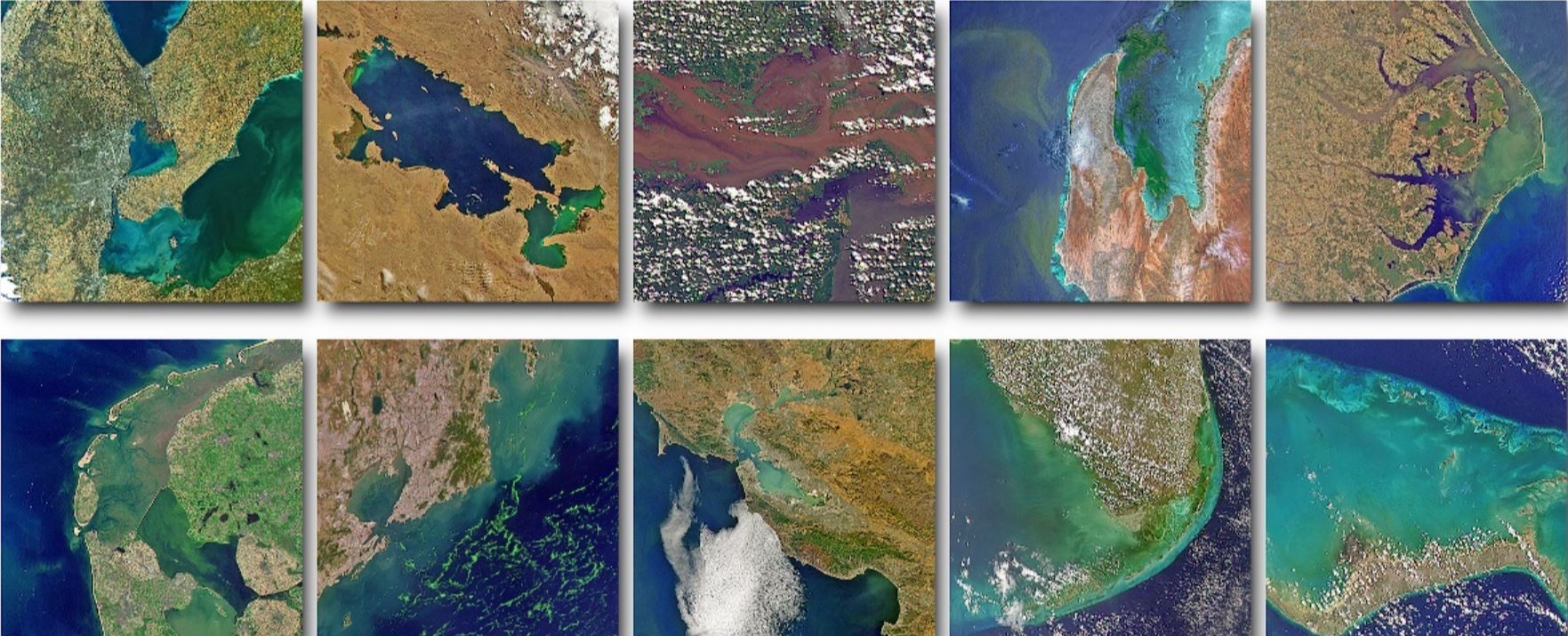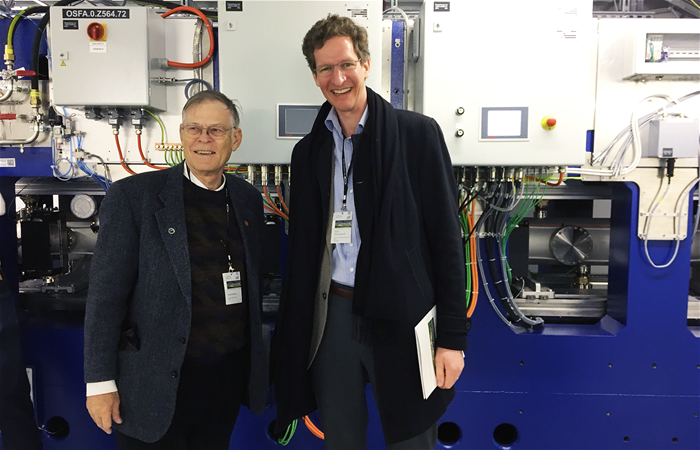The Moore Foundation’s Science Program fosters pathbreaking scientific discovery and a vibrant ecosystem for science, covering high-impact areas with a mix of initiatives, portfolios and standalone grants. Part of Program Officer Gary Greenburg’s portfolio covers advanced scientific instruments, which power many of today’s most exciting discoveries and open new windows of understanding. To identify projects to support, Greenburg looks for bleeding-edge, underfunded projects with the potential to address critical gaps in their field and works to build a long-term plan with grantees to ensure achievable scope and enduring impact. Two notable recent examples of this approach are the development of the small ocean color monitoring satellite SeaHawk and the multi-national Accelerator on a Chip project, where initial funding was critical in supporting novel ideas and connecting partners to develop technologies with exciting, lasting impact in their fields.
Approach to funding
When looking at projects to support, Greenburg takes several factors into account. He seeks out state-of-the-art instruments and technologies that have limited or pulled funding, and have high potential. With high-risk, high-reward projects, sound science and initial research can make them worth the risk – or as Gordon Moore once said, worth “swinging for the fences.” Greenburg looks for input from experts in relevant fields to help validate whether a proposed instrument is novel, fills a pressing scientific need, and is technically achievable.
At the same time, Greenburg recognizes that truly groundbreaking approaches to building instruments tend to have continuing outcomes, potentially requiring years of development and refinement. Building a true partnership helps achieve these goals. Once a grantee is identified the foundation commits to supporting the grantee’s long-term vision, potentially staying past the initial stage to help further develop the idea and evaluate progress. He also works with grantees to identify complementary funding sources to ensure stability and longevity of the instrument.
The SeaHawk CubeSat
SeaHawk serves as an example of building a legacy that lasts well beyond initial funding, paving the way for future innovation in a field. In 2014, the foundation supported the University of North Carolina, Wilmington in their efforts to develop an inexpensive shoebox-sized nanosatellite for ocean color monitoring. The university had multiple partners on the project, including NASA, the Skidaway Institute of Oceanography, Cloudland Instruments and AAC-Clyde space, forming a productive union between public, private, commercial and federal institutions and organizations.
Ocean color monitoring is an important part of observing marine ecosystem health and traditional color monitoring tools, which are expensive to produce, are limited in both the resolution and frequency of images they can capture. SeaHawk successfully overcame this limit and took thousands of high-resolution images at a higher frequency while being designed with low-cost, off-the-shelf parts.

[Image] Montage of images taken by SeaHawk. Credit: NASA
While SeaHawk is now being decommissioned, its impact lives on. The data it collected is free and publicly available via NASA’s existing datasets and infrastructure. The development of the CubeSat itself is a successful proof-of-concept that nanosatellites can be effective at a fraction of the cost compared to traditional instruments. It also serves as an example that further iterations of nanosatellites can reference and learn from.
"This highly successful project didn't just pioneer low-cost satellites equipped with state-of-the-art scientific instruments – it sparked a paradigm shift," said Greenburg. "By demonstrating that CubeSats can produce high-quality scientific data, the project is transforming how scientific observation of Earth from space could be conducted in the future, opening new horizons for monitoring our planet."
Accelerator on a Chip
The Accelerator on a Chip, or ACHIP, project to build a dielectric laser accelerator highlights the power of bringing people with similar ideas together, even spread across multiple continents. Years ago, the idea of a miniature particle accelerator was widely viewed as unlikely to succeed, and Stanford’s Robert Byer was struggling to find support for his work. With funding from the Defense Advanced Research Projects Agency, Byer’s group at Stanford University and Hommelhoff’s team at Friedrich-Alexander-Universität Erlangen-Nürnberg published promising research. After the funding ended, in 2015 Greenburg encouraged Byer and Hommelhoff to build an international team of universities, accelerator laboratories and industrial partners to continue the work. On top of being valuable research partners, the laboratories contributed an equal amount of in-kind funding to the foundation’s investment.
In addition to the two teams from the United States and Germany, the project also featured work from Mitsuru Uesaka’s lab at Tokyo University and Ido Kaminer’s group at the Technion in Israel. In 2023, the teams at Friedrich-Alexander-Universität Erlangen-Nürnberg and Stanford University published papers demonstrating nanophotonic electron accelerators.
Looking into the future, there are many exciting potential applications of this accelerator across scientific and medical fields, such as new diagnostic tools or methods to treat skin cancer. The foundation has supported Dr. Hommelhoff’s and Dr. Kaminer’s work on imaging quantum coherence with shaped electrons to put ACHIP inside an electron microscope and develop a new type of microscope that can image quantum properties of materials, ushering in the new field of coherence imaging. The field is well-positioned for growth and innovation for years to come.

[Image] Moore Foundation's Accelerator on a Chip co-principal Investigators Bob Byer (left) and Peter Hommelhoff (right).
“These multi-institutional types of projects with difficult science and complex engineering can take many years to be successful,” Greenburg said, “but perseverance, dedication and skilled project management by the grant team reduces the scientific risk.”
Lessons and future potential
A diligent, well-researched approach to funding scientific instrumentation helps maximize the impact of seed funding. Seeking out risky and sometimes underfunded projects gives them a chance to succeed and recognizing the value of lasting partnerships helps guide these efforts towards a successful conclusion. With luck, the results from these projects can have meaningful applications in multiple fields, enabling a community of researchers, beyond the initial team, to continue asking important questions and pursuing novel research.
Advances in technology drive the creation of more powerful instruments – faster, more precise, and capable of catalyzing even greater scientific and technical breakthroughs, which lead to even more powerful instruments. This continuous cycle of technological innovation and advanced scientific instruments drives groundbreaking discoveries, pushing science forward.

Message sent
Thank you for sharing.